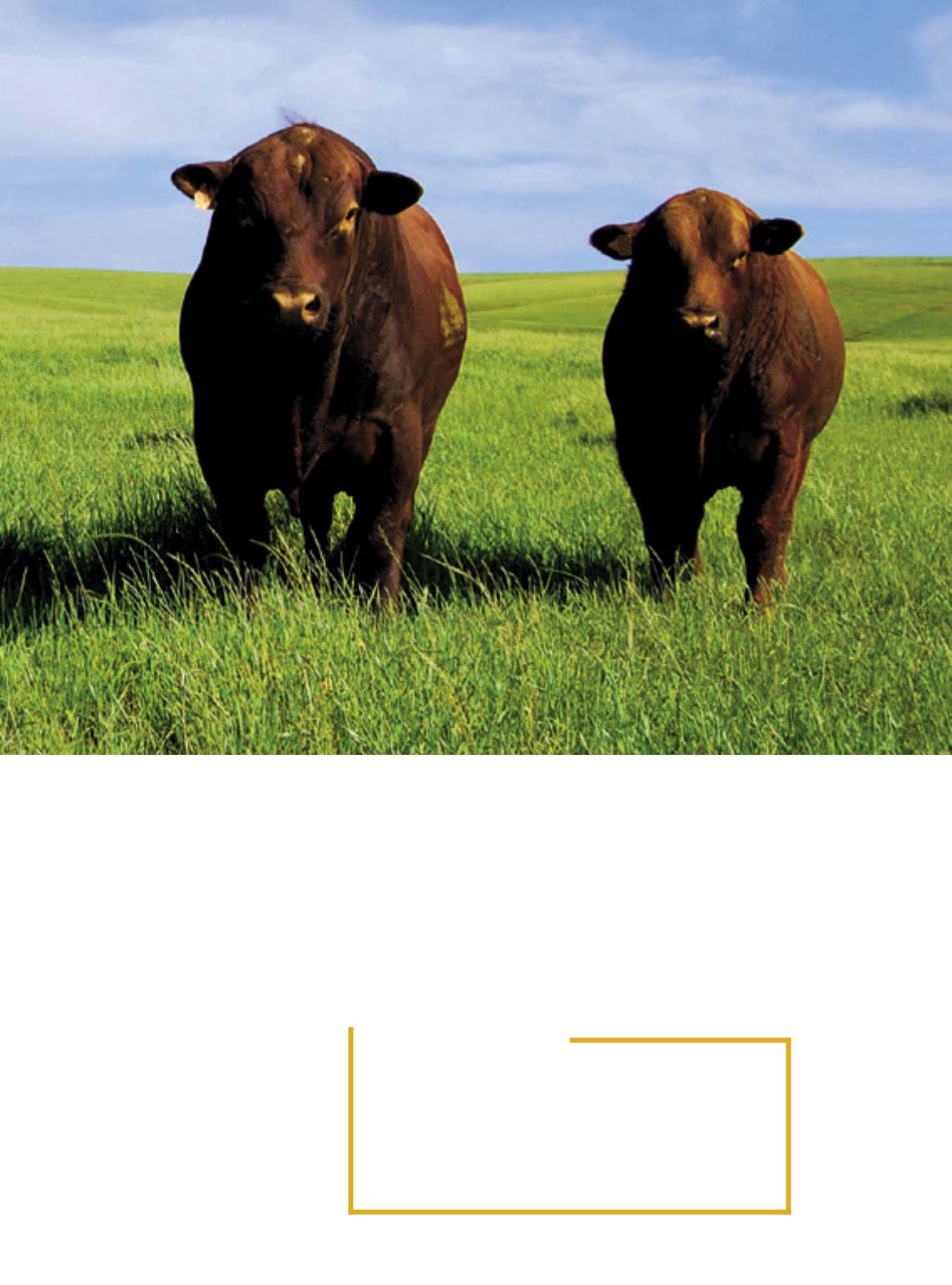
l
FOREIGN SALES
Brazilian beef exports – fresh, industrialized, salted cuts and gib-
lets - reached 1.53 million tons in 2017, up 9.5 percent from the total
shipments in the previous year. These numbers come fromthe Associ-
ation of Brazilian Beef Exporters (Abiec). Revenue fromexports in 2017
reached US$ 6.28 billion, which represents 14% more than in 2016.
Hong Kong, China, Iran, Egypt andRussiawere the leading clients.
consumption in Brazil in 2018.
Thecontaminationofthemarketbyexter-
nal factors puts the supply chainon the alert.
Politicalaspectsrelatedtothesocialsecurity
and tax reformplans, alongwith the general
elections could interfere with the exchange
rate, with inflation and with the results of
the cattle farming business. It is necessary
to recall that animals not put in confine-
ment in 2017, along with the rising num-
ber of cow slaughters, could exert pressure
over the market. While the smaller agricul-
tural cropwill have reflections on feedprices.
Repositioncould represent a smallermargin.
This induces the cattle farmers to pursue se-
curity in order to be prepared against higher
costs and smaller profit margins. There are
debts to be paid to the Assistance to the Ru-
ralWorker Program(Funrural).
Alcides Torres, analyst at Scot Consul-
tancy, recalls that 2017 was marked by im-
pacts that do not belong to the realm of
beef cattle farming. “The lesson to be de-
rived from the situation is that there is need
to avoid risks. To this end, it is important for
the cattle farmers to make use of the avail-
able tools, like tie-in sales, future sales, and
the market of options”, he explains. In 2015
and 2016, those who curtailed prices man-
aged to make profits. In 2017, it was more
complicated, but even so the mechanism
brought security”. According to him, the
smallest risk affects profit margins. “It is al-
ways better to opt for security than incur
losses”, he adds. For these tools to be uti-
lized the farmers must have good manage-
ment practices and control over costs.
Froman international point of view, Bra-
zil will have no problems with its competi-
tors. The United States, Australia, India and
China face challenges in light of their pro-
duction, whether strategic, climatic or polit-
ical-religious barriers.
53


